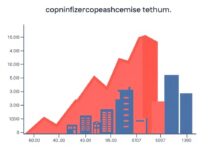How to protect your assets in uncertain times

Consider incorporating insurance into your financial framework. Whether it’s life, health, or property coverage, this step creates a safety net that can shield you from unexpected financial burdens during downturns.
Diversification stands as a cornerstone in an investment portfolio. Allocate resources across various sectors, asset classes, and geographical regions to minimize risk exposure. A well-balanced mix can cushion against losses when specific markets falter.
Effective planning is paramount. Establish clear financial goals and regularly reassess your strategies to adapt to changing circumstances. Utilize tools such as contingency funds and automated investments to maintain stability amidst fluctuations.
Incorporating these elements can significantly enhance resilience against economic unpredictability, allowing for a more secure financial future.
Diversifying Investment Portfolio
Allocate funds across various asset classes to mitigate risks during market downturns. A well-diversified investment portfolio not only enhances potential returns but also shields wealth from volatility.
- Equities: Invest in different sectors such as technology, healthcare, and consumer goods to spread risk. Consider both domestic and international stocks.
- Bonds: Include government and corporate bonds of varying maturities. This adds stability and generates income even during turbulent periods.
- Real Estate: Real estate investments can provide a hedge against inflation and serve as a tangible asset that appreciates over time.
- Commodities: Allocate a portion of the portfolio to commodities like gold or silver, which often retain value during economic declines.
Regularly reassess your allocations based on performance and changes in market conditions. Maintain an adaptable approach to planning that allows for adjustments when necessary.
- Review portfolio composition at least annually or after significant market events.
- Consider utilizing index funds or ETFs for broader exposure with lower fees.
- Avoid concentrating too much wealth in any single investment; this can lead to greater exposure to losses.
Diversification is not merely about variety; it’s a calculated method to enhance resilience against unpredictable financial climates. By strategically spreading investments, you create a buffer that preserves capital while seeking growth opportunities.
Utilizing Real Estate Options
Consider leveraging real estate options as a method to hedge wealth against potential market downturns. This approach allows for the acquisition of properties at predetermined prices without immediate financial commitment, providing flexibility in volatile conditions.
Engage in strategic planning by selecting properties in desirable locations with strong growth potential. Focus on areas that demonstrate resilience during economic shifts. Analyze local market trends and demographic data to make informed decisions regarding potential investments.
Diversification is key; utilize options across different property types–residential, commercial, or industrial–to mitigate risks. Each sector may respond differently to economic changes, offering a balanced exposure that can stabilize overall returns.
Implementing a timeline for exercise of options can enhance your position. Be prepared to act swiftly when favorable market conditions arise, ensuring you capitalize on opportunities while limiting downside risk.
Regularly review and adjust your portfolio based on evolving market dynamics and personal financial goals. Stay informed about interest rates, regulatory changes, and economic forecasts that could impact real estate values.
Exploring Precious Metals
Investing in precious metals like gold and silver provides a robust method for protecting wealth during market downturns. Allocate a portion of your portfolio–typically 5-15%–to these metals to act as a hedge against inflation and economic instability.
Gold, often referred to as a safe haven, tends to retain its value when other investments falter. During periods of economic distress, its price usually rises, serving as an effective form of insurance against financial loss. Monitor global demand and geopolitical factors that can influence prices, ensuring timely entry and exit points in the market.
Silver offers unique advantages due to its industrial applications alongside its role as a store of value. Its price is typically more volatile than gold, which can present opportunities for profit through strategic timing based on market trends.
Diversification within precious metals is critical; consider investing in both physical bullion and exchange-traded funds (ETFs) that track metal prices. This approach allows for flexibility while minimizing risk. Additionally, familiarize yourself with reputable dealers or online platforms for purchasing metals securely.
Understand the tax implications associated with buying and selling precious metals, as they may differ significantly from traditional assets. Keeping abreast of regulatory changes can enhance your investment strategy.
In conclusion, incorporating precious metals into an investment framework not only diversifies holdings but also provides resilience against economic fluctuations. Stay informed about market dynamics to maximize potential gains while safeguarding your wealth effectively.
Implementing Risk Management Plans
Establish a comprehensive risk management plan that includes identifying potential threats to your wealth. Conduct a thorough analysis of the market downturn scenarios relevant to your investments. This proactive approach allows for timely adjustments, reducing exposure during volatile periods.
Incorporate diversification across various sectors and asset classes to mitigate risks associated with specific markets. Allocate resources not only in traditional stocks but also in alternative investments such as bonds, commodities, and currencies, which can behave differently under economic stress.
Regularly review and adjust your portfolio based on market conditions and individual asset performance. Set clear thresholds for loss tolerance and profit-taking to prevent emotional decision-making during turbulent times. Utilize stop-loss orders where applicable to automatically secure profits or limit losses.
Consider integrating insurance products within your financial strategy. They can provide an additional layer of protection against unforeseen events that could impact your wealth significantly.
Finally, maintain liquidity in your portfolio. Having readily available funds enables you to capitalize on opportunities that may arise from market fluctuations while ensuring you are not forced to sell assets at unfavorable prices during downturns.
Monitoring Economic Indicators
Track key economic indicators such as GDP growth rates, unemployment figures, and inflation levels. These metrics provide insight into the health of the economy and can signal potential market downturns.
Pay attention to consumer confidence indices; a decline may suggest reduced spending, impacting various sectors. Additionally, analyze interest rate trends set by central banks, as rising rates often lead to decreased liquidity and lower asset values.
Utilize resources like the Bureau of Economic Analysis or Federal Reserve reports for accurate data. Incorporate these findings into a diversified investment approach to mitigate risks associated with market fluctuations.
Monitor commodity prices closely, particularly in volatile markets. Increases in oil or agricultural prices can foreshadow inflationary pressures that affect overall wealth management strategies.
Establish alerts for significant shifts in these indicators to remain proactive. This proactive stance acts as a form of insurance against unforeseen economic challenges, ensuring a more resilient financial posture.







